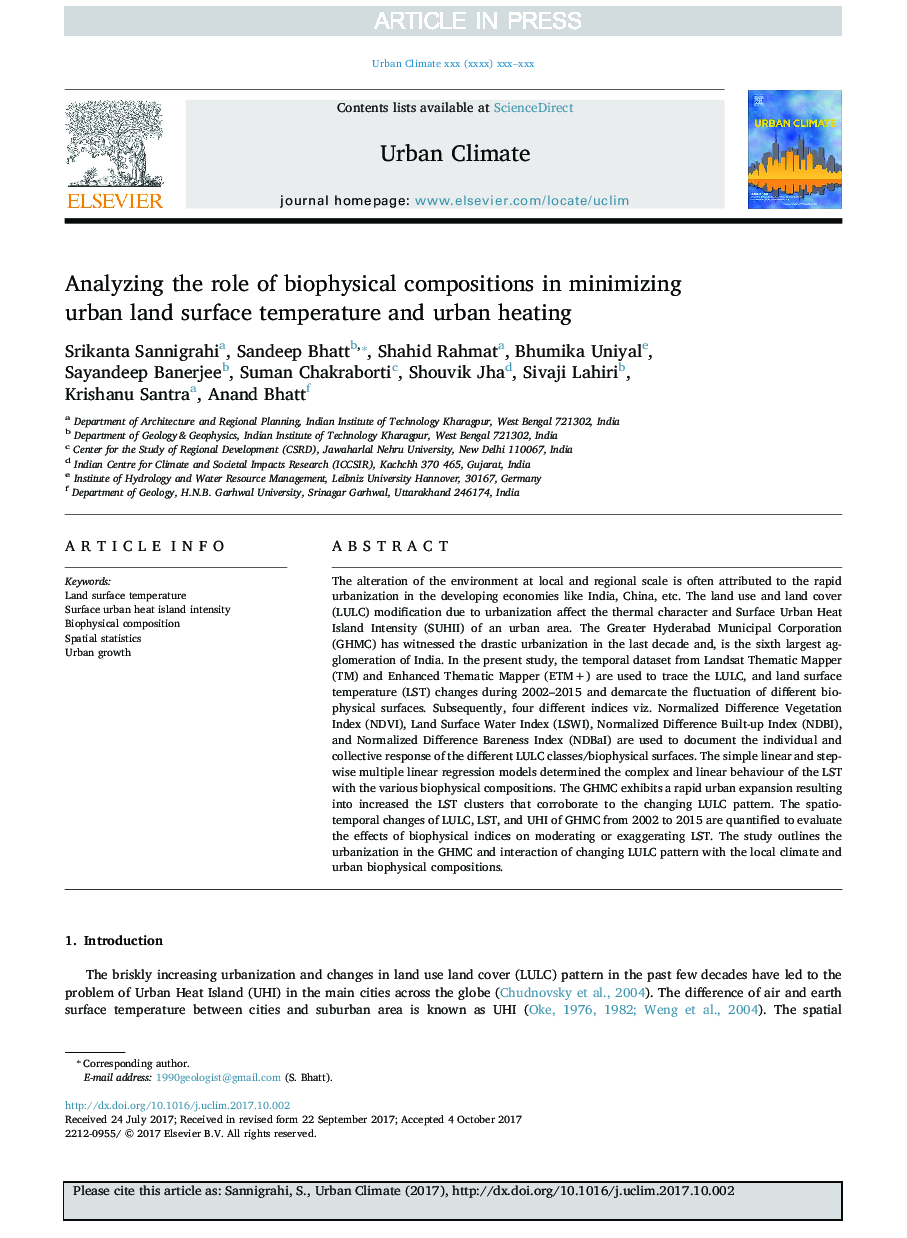| Article ID | Journal | Published Year | Pages | File Type |
|---|---|---|---|---|
| 6576922 | Urban Climate | 2018 | 17 Pages |
Abstract
The alteration of the environment at local and regional scale is often attributed to the rapid urbanization in the developing economies like India, China, etc. The land use and land cover (LULC) modification due to urbanization affect the thermal character and Surface Urban Heat Island Intensity (SUHII) of an urban area. The Greater Hyderabad Municipal Corporation (GHMC) has witnessed the drastic urbanization in the last decade and, is the sixth largest agglomeration of India. In the present study, the temporal dataset from Landsat Thematic Mapper (TM) and Enhanced Thematic Mapper (ETMÂ +) are used to trace the LULC, and land surface temperature (LST) changes during 2002-2015 and demarcate the fluctuation of different biophysical surfaces. Subsequently, four different indices viz. Normalized Difference Vegetation Index (NDVI), Land Surface Water Index (LSWI), Normalized Difference Built-up Index (NDBI), and Normalized Difference Bareness Index (NDBaI) are used to document the individual and collective response of the different LULC classes/biophysical surfaces. The simple linear and step-wise multiple linear regression models determined the complex and linear behaviour of the LST with the various biophysical compositions. The GHMC exhibits a rapid urban expansion resulting into increased the LST clusters that corroborate to the changing LULC pattern. The spatiotemporal changes of LULC, LST, and UHI of GHMC from 2002 to 2015 are quantified to evaluate the effects of biophysical indices on moderating or exaggerating LST. The study outlines the urbanization in the GHMC and interaction of changing LULC pattern with the local climate and urban biophysical compositions.
Related Topics
Physical Sciences and Engineering
Earth and Planetary Sciences
Earth and Planetary Sciences (General)
Authors
Srikanta Sannigrahi, Sandeep Bhatt, Shahid Rahmat, Bhumika Uniyal, Sayandeep Banerjee, Suman Chakraborti, Shouvik Jha, Sivaji Lahiri, Krishanu Santra, Anand Bhatt,
